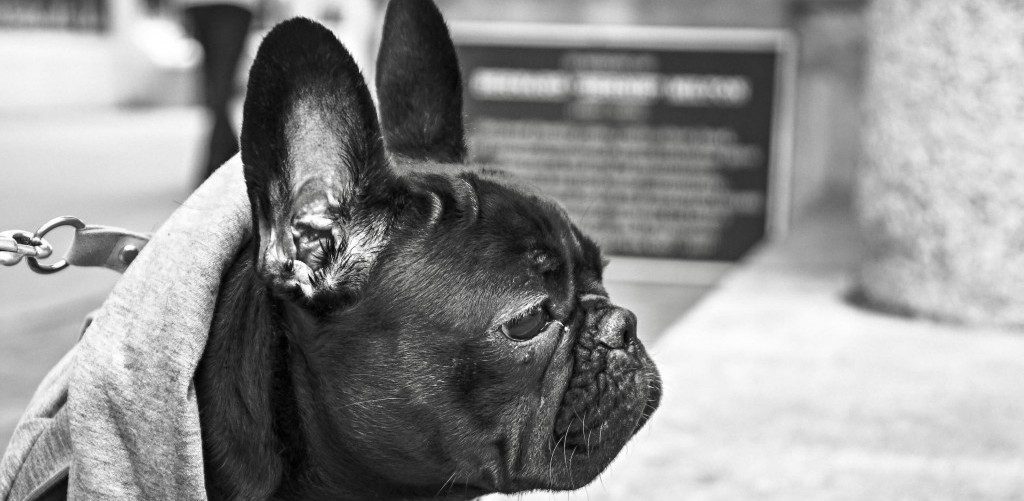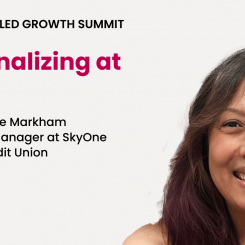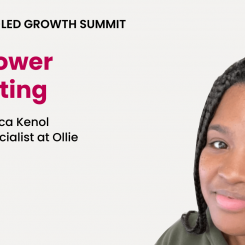
When you want more customers in your loyalty program, how do you get them? Create bonus incentives for joining? In-store and point-of-sale initiatives? Campaigns focused on signing up? These are all familiar and effective, and still many loyalty marketers today find that they’re not enough to meet their new member goals.
And at the same time, a recent survey by the DMA and Forrester showed that the majority of marketers were not satisfied with their loyalty program. Research analysts, including Richard Fouts, of Gartner, and Forrester’s Tina Moffett, advocate moving away from traditional, point-based “earn-and-burn” programs and instead thinking of loyalty as a broader strategy. Why? Because traditional programs are purely transactional.
Jump to:
- Referred customers are better customers
- Make referrals easy to find and easy to use everywhere
- Personalize your program for your most loyal customers
- Reward quickly to keep participants happily referring
There is an approach that loyalty marketers can use to complement their programs, one that allows them to increase their loyalty rolls while continuing to drive revenue from their existing customer base. The customers it generates are, in general, more valuable and more loyal than the average customer. And better still, you get deep insights into how those customers feel about your brand and how they help you grow.
That technique is the referral channel, aka refer-a-friend programs. Extole’s referral marketing platform is the technology behind more than 500 programs for large brands in retail, financial services, and other industries. We’ve analyzed years of data, across hundreds of programs, to learn about the number and type of customers that refer-a-friend marketing generates. And we’ve determined that customers brands acquire through referrals are more valuable, and more loyal, than customers they get through other channels.
Referred customers are better customers
With the data from our platform and from independent research, we know that referred customers are better for brands than non-referred customers in six main ways:
- They have a 25% higher lifetime value (LTV)
- They have a 20% higher average order value (AOV) each year
- They have a 15 point–higher average net promoter score (NPS)
- They’re 18% less likely to churn
- They’re 25% more profitable over their lifetimes
- They’re between four and five times more likely to refer additional new customers
In a nutshell, referred customers spend more per purchase and purchase more over their lifetime. In these ways, referred customers sound a lot like customers in your loyalty program, who are more valuable than other customers. (Isn’t that why you want to acquire more of them?) But, uniquely, referred customers are far more likely to refer their friends and bring you additional customers who will add even more to your bottom line. (You can also find these statistics in our latest infographic on customer quality.)
Put together, the time is right for the people responsible for the growth and success of loyalty programs to take advantage of referrals the same way acquisition marketers have been. The key with referral is that it markets through customers rather than to them. Loyalty marketers from eBags, Starbucks, and Virgin America, among others, use refer-a-friend to acquire better customers. With that in mind, here are the strategies you’ll want to use to make sure you get the most out of referrals for re-energizing your loyalty program.
Make referrals easy to find and easy to use everywhere
Your goal is to drive acquisition and retention within your loyalty program. The best way to do this is to present the referral opportunity wherever customers interact with your brand. Why? Because the more sharing chances you create, the more people will share, and the more who’ll convert. Loyalty-specific locations like account pages and program homepages are just the start. There’s a world of owned media you can use: website (desktop and mobile), mobile app, email streams (transactional, operational, marketing), social profiles, and even offline such as inside your stores, through your sales and support agents, and in your packaging. Take eBags, for example. It rewards advocates with loyalty program dollars, regardless of whether they are existing loyalty program members or not, which drives customers into the program. (It rewards friends with 20% off their first order.) But, it presents referral CTAs in its global header, global footer, and product listings, among others, to drive as much sharing as possible.
The above examples give your program inbound visibility. There’s also outbound promotion to consider. Dedicated email blasts and display ads are effective. Marketers have become increasingly creative: retargeting on Facebook, advertising on podcasts, and more.
Personalize your program for your most loyal customers
Your relationship with your best customers is unique. The people who advocate the most for you, share the most, drive the most individual referrals, and drive the most referral revenue, do more than increase your bottom line. They put their reputation on the line by recommending your brand to their family and friends. (Remember, referrals are different from affiliate marketing. These are not economic agents who are looking to be paid for driving traffic to your site. These are everyday advocates: the customers you already have who share with the people they already know.) Their support is critical to your success, especially if you’re not a huge brand name. As eBags founder Peter Cobb points out, “Small companies need to create some type of groundswell…you need to get some positive momentum.”
Recognize these customers’ contribution and take special care of them. You can surprise and delight top advocates with a special gift. Or offer top referrers a different reward, whether it’s a richer product discount or a third-party gift card, than you offer other advocates. By segmenting your program participants, you give yourself nearly unlimited options for taking care of your best customers.
You can also do this on an individual level. Because the referral messages that advocates share are personalized, you can see when someone writes something particularly heartfelt, effective, or just generally awesome about your brand. If a share message really catches your eye, you can surprise and delight the advocate who expressed it. (And by the way, on both the segment and individual levels, surprising and delighting your customers creates perfect opportunities for them to refer again, so make sure to include referral CTAs with your rewards and gifts when you do this.)
Reward quickly to keep participants happily referring
There’s nothing worse than being promised something that you never get. Offering referral rewards that you don’t deliver until after someone in your organization reconciles a spreadsheet a month down the line essentially sends your customers the message that you don’t care about their referrals. This is bad enough to do to your general customer base — imagine the message it sends to the customers in your loyalty program.
Once an advocate shares a referral that leads to a conversion that meets your standards, reward them immediately. They’ve earned it. (And again, you’ve just created another opportunity for that customer to sing your praises and refer yet more customers.)
Traditional loyalty programs no longer stand out to customers or the business owners who are charged with supporting and cultivating them. Thankfully, referral marketing gives you the chance to embrace a loyalty strategy that’s truly different. It’s effective at acquisition. It’s personal. It leads to better customers. And it could just be the future of loyalty.
This post originally appeared on Loyalty360. Interested in learning more about referral marketing as the future of loyalty? Join our 6/25 webinar.



